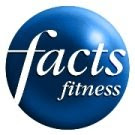There are three things to remember when giving your abdominals a workout: protect your neck and lower back; work all three sets of abs for symmetry; and, work slowly to get noticeable results.
Many ab exercises put unnecessary strain on the lower back. In every ab exercise, engage the muscles by contracting towards the spine. In a traditional crunch, the temptation is to pull on the neck and use momentum to lift the chest rather than use the lower belly muscles. Flatten the chest and lift from the core abdominal muscles. You will feel your core working.
Most people focus on the “six pack” muscles of the middle of the midsection of rectus abdominals. It is important to equally develop all three major ab muscle groups to not create an imbalance. Only developing the six pack group can create a posture that slouches forward. Work on crunches, but also side to side actions and curl ups to develop all the abs equally.
Fast movements in ab exercises do not work effectively to shape the muscles. Rushing through sit ups, for example, uses the hip flexor muscles and not the abs. If you rush through the exercises, the work is no longer muscle dependent and you will not get the desired muscle development or visible shaping. Doing three sets of ten repetitions slowly is better than doing thirty reps quickly.
Michael Kasprenski, Wellness Coach, Steel Fitness
Tuesday, January 24, 2012
Tuesday, January 17, 2012
Do You Know Your Trainer?
Do you know your trainer? Fitness professionals get a bad rap at times, and most of the time they’ve earned it. There are many trainers out there that are more interested in their self gratification rather than taking care what is most important, the client.
As I have observed trainers with their clients, I’ve noticed that there are two types of trainers. There is the one who stands there looking disinterested and distracted. They may have their arms crossed and are not engaging the client in conversation, and even more important they are not correcting the form of their client.

Then there is a 2ndtype of trainer, the fitness professional. One that looks the part, and is engaging with the client to be sure that each step of the way the client is using proper form. This trainer is standing a sports stance ready to help the client focused on their client and having a conversation.
I sometimes ask why some trainers got into this profession. You should ask yourself the same thing if your trainer is like the 1st type of trainer, or if they are more like the 2nd type of trainer that I described. If so, then they are well worth the money you invested in your health and fitness. You will have a great workout and experience the results you desire.
Post Written by Michael Massafra, Fitness Director, FACTS Fitness
Monday, January 9, 2012
How Goal Setting Can Improve Your Results
Are you working out just to workout, or do you have a specific reason? Have you been doing the same workout for years? You know it’s good for you, but do you wonder what exactly exercise can do for you?
Written by Micah Josephson, Personal Trainer for FACTS Fitness
Goal setting is possibly the most important part of exercise. Without stating what you’d like to accomplish, there’s no way to achieve it. So what can exercise do for you? With proper direction and motivation, exercise can affect many positive changes, including the following:
· Improvement in a specific sport
· Decrease the risk for diseases (arthritis, Alzheimer’s, various forms of cancer)
· Increase flexibility
· Better balance and coordination
· Avoid or get rid of joint pain
Setting goals takes several steps, but is easy. You must begin by questioning yourself. “What do I want to accomplish?” “What is my current health status?” “Is this goal a credible goal?” “What are the steps I need to take in order to get to my goal?” You must follow these questions by establishing a way to measure the movement towards your goal; for example, a valid fitness assessment. Track your workouts. Write down your activities and their difficulty levels. Lastly, you must be prepared to do a full re-assessment after three months and make any modifications to keep you on course.
Some examples of valid goals are; “Improve my tennis game” “Get rid of my knee pain” “Walk down the street and not be afraid of falling” “Be able to bend over and touch my toes” “Climb stairs without getting winded.”
Goal setting gives your workouts a focus. Rather than just going through the motions, pick a direction and work hard to achieve what you want!
Written by Micah Josephson, Personal Trainer for FACTS Fitness
Subscribe to:
Posts (Atom)



